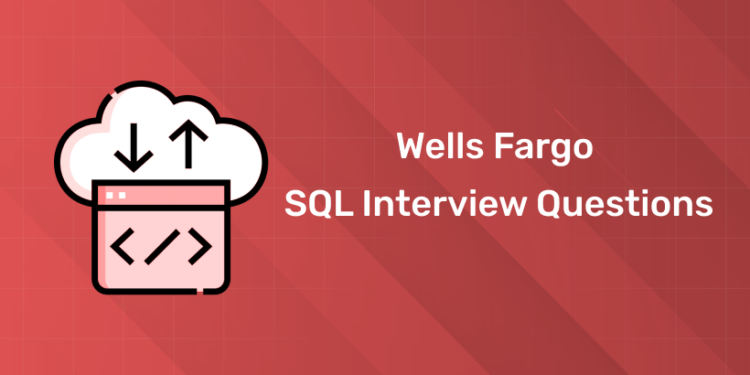Table of Contents
Getting a job at Wells Fargo, one of the biggest and most respected financial institutions in the world, is a dream for many IT professionals especially for those with SQL skills. SQL is the backbone of data management in most companies and Wells Fargo is no exception. For candidates preparing for Wells Fargo SQL interview, knowing the most common SQL questions asked in the interview process is key to stand out and get the job. This blog will walk you through some tips, top Wells Fargo SQL questions and how to prepare for your interview.
If you want to hone your SQL skills or want to explore a career in tech, taking a Full Stack Developer Course at Entri is a great way to get ahead. Check out Entri’s Full Stack Developer Course here. It’s hands on training and has all the tools you need to ace interviews including mastering SQL.
Why Join Wells Fargo?
Before we get into SQL questions, let’s first talk about why Wells Fargo is a good place to work.
- Global Reach: Wells Fargo is a global financial services company with presence in over 30 countries. Being a big player in the financial industry means it’s a great place to build a career.
- Innovative Work Environment: Wells Fargo is always innovating in its business, especially in technology. So the skills you develop here will always be up to date and valuable.
- Professional Growth: The company has many opportunities for growth and development whether it’s through career advancement programs, leadership courses or mentorship.
- Financial Stability: Working for a company as financially stable as Wells Fargo means job security and many benefits including competitive salary and great benefits package.
Wells Fargo Interview Preparation Tips for SQL
1: Which of the following is a JavaScript framework/library?
Before we get into the actual SQL questions, here are some tips to help you prepare for the interview and impress your potential employer.
- Review SQL Fundamentals: SQL is all about querying databases. Make sure you understand SELECT, JOIN, WHERE clauses, subqueries and aggregate functions. Wells Fargo will most likely test your understanding of these core concepts.
- Practice Real-World Scenarios: Wells Fargo SQL interview questions will not be just theoretical. Be prepared to face questions that test your ability to solve real-world data problems. Practice with mock databases and try to solve business problems.
- Prepare for Optimization and Indexing Questions: Large companies like Wells Fargo handle huge amount of data. Understanding how to optimize SQL queries, use indexes and troubleshoot performance issues is key.
- Brush up on Financial Data: Since you’ll be working in a financial institution, understanding how SQL is applied in banking is an advantage. Look into concepts like transaction management and handling financial data queries.
- Data Security: Security is top priority for financial institutions. Prepare for questions that involve ensuring data integrity, safeguarding sensitive information and SQL injection.
- Mock Interviews: If possible, practice with mock interviews. There are platforms that provide mock interview sessions focusing on SQL, which can simulate the real interview scenario.
🚀 Start Coding Today! Enroll Now with Easy EMI Options. 💳✨
Get Hired as a Full-Stack Developer: Master the Skills Employers Are Looking For!
Start Learning With EMI Payment OptionsWells Fargo SQL Interview Questions and Answers
Here are the top Wells Fargo SQL questions you should expect in your interview along with answers.
1. What is SQL and why is it important for data management?
Answer: SQL is Structured Query Language and is used to manage and manipulate relational databases. SQL allows you to create, read, update and delete (CRUD) data in a database. It’s important for data management because it provides a structured way to interact with big data.
2. What is the difference between DELETE and TRUNCATE in SQL.
Answer: DELETE is a DML (Data Manipulation Language) command to remove rows from a table based on a condition and can be rolled back. TRUNCATE is a DDL (Data Definition Language) command to remove all rows from a table and can’t be rolled back. TRUNCATE is faster than DELETE because it doesn’t log individual row.
3. What is INNER JOIN in SQL and when would you use it?
Answer: An INNER JOIN in SQL is used to combine rows from two or more tables based on a related column. It returns only the rows where there is a match in both tables. You would use an INNER JOIN when you need to retrieve data that has a relationship across different tables.
SELECT employees.name, departments.department_name FROM employees INNER JOIN departments ON employees.department_id = departments.department_id;
4. What are Indexes in SQL? How do they improve query performance?
Answer: Indexes in SQL are used to improve the speed of data retrieval operations on a table. An index is a data structure that provides quick lookup for the data in a table. While they improve read performance, indexes slow down write operations like INSERT, UPDATE and DELETE as the index also needs to be updated.
5. What is a View and how is it different from a Table?
Answer: A View in SQL is a virtual table based on the result set of a SQL query. Unlike a regular table, it doesn’t store data but retrieves data dynamically whenever queried. You can use views to simplify complex queries, secure sensitive data or to represent a subset of the data.
6. How would you get the second highest salary from the employee table?
Answer: SELECT MAX(salary) FROM employees WHERE salary < (SELECT MAX(salary) FROM employees);
This query gets the second highest salary by first getting the highest salary and then filtering out the result to get the second highest.
7. What are GROUP BY and HAVING clauses in SQL.
Answer: GROUP BY is used to group rows that have the same values in specified columns into aggregated data. HAVING is used to filter rows after aggregation, similar to WHERE but for grouped records.
SELECT department, COUNT() FROM employees GROUP BY department HAVING COUNT() > 5;
8. How do you optimize a slow running SQL query?
Answer: Optimize a SQL query by:
- Using indexes for search operations.
- Writing efficient SQL queries by avoiding subqueries and using JOINs.
- Limiting the result set using LIMIT or WHERE.
- Avoid using SELECT * and specify the columns.
9. What is a Transaction in SQL and why is it important?
Answer: A transaction is a sequence of one or more SQL statements executed as a unit of work. It follows the ACID properties (Atomicity, Consistency, Isolation, Durability). Transactions are important so that a series of operations either succeed as a whole or fail as a whole and not partially update the database.
10. What is the difference between UNION and UNION ALL?
Answer: UNION combines the result sets of two or more SELECT statements and removes duplicates. UNION ALL combines result sets but includes all duplicates. Use UNION when you want distinct results and UNION ALL when duplicates are allowed or desired.
Which step are you stuck on?
11. What is the difference between COUNT(*) and COUNT(column_name)?
Answer:
- COUNT(*) counts all the rows in a table including the rows with NULL values in any column.
- COUNT(column_name) counts only the non-NULL values in the specified column.
12. What is PRIMARY KEY and can a table have more than one?
Answer: PRIMARY KEY is a unique identifier for a row in a table. It ensures the column(s) marked as primary key do not have duplicate or NULL values. A table can have only one primary key but that key can consist of multiple columns (composite key).
13. How to select random rows from a table in SQL?
Answer:
In SQL you can use the following query to select random rows:
SELECT * FROM employees ORDER BY RAND() LIMIT 10;
This will return 10 random rows from the employees table.
14. What is the difference between CLUSTERED and NON-CLUSTERED index?
Answer:
- CLUSTERED index defines the physical order of data in a table and can be created only once per table. The data rows are stored in the order of the clustered index.
- NON-CLUSTERED index does not alter the physical order of the data and allows multiple indexes per table. It creates a separate object within the table which points back to the original table rows.
15. How to get the current date and time in SQL?
Answer: You can get the current date and time using the following SQL:
SELECT NOW();
16. What is SELF JOIN in SQL?
Answer: SELF JOIN is a join where a table is joined with itself. This can be useful when you want to compare rows within the same table.
SELECT A.employee_id, B.employee_id FROM employees A, employees B WHERE A.manager_id = B.employee_id;
17. What is the difference between UNIQUE and DISTINCT
Answer:
- UNIQUE is a constraint that ensures all values in a column are distinct and no duplicates are allowed.
- DISTINCT is a keyword used in SELECT queries to return only distinct values, removes duplicates from the result set.
18. What is CASE statement in SQL?
Answer: CASE statement allows conditional logic in SQL. It is similar to IF-THEN-ELSE structure.
SELECT employee_id, CASE WHEN salary > 50000 THEN ‘High’ ELSE ‘Low’ END AS Salary_Category FROM employees;
19. How to find duplicate records in a table?
Answer:
SELECT column_name, COUNT() FROM table_name GROUP BY column_name HAVING COUNT() > 1;
20. What is a SUBQUERY and how is it different from a JOIN?
Answer: A SUBQUERY is a query inside another query. It is used to perform operations that are later passed into the main query.
A JOIN combines rows from two or more tables based on a column between them. Subqueries can’t return a combined result set from multiple tables in one result.
21. How do you calculate the average salary from employees table?
Answer: AVG() is the keyword used to find average
SELECT AVG(salary) FROM employees;
22. What is DATA INTEGRITY and how does SQL enforce it?
Answer: Data integrity means accuracy and consistency of data in a database. SQL enforces it through constraints like PRIMARY KEY, FOREIGN KEY, UNIQUE, NOT NULL and CHECK which helps to maintain valid relationships and data in the database.
23. How do you get the first 5 rows from a table?
Answer: You can use the LIMIT clause in SQL:
SELECT * FROM employees LIMIT 5;
24. What is COALESCE function in SQL.
Answer: COALESCE returns the first non-NULL value from a list of expressions.
SELECT COALESCE(column1, column2, ‘Default Value’) FROM table_name;
25. How do you remove duplicates without using DISTINCT?
Answer: You can remove duplicates using a GROUP BY clause:
SELECT column_name FROM table_name GROUP BY column_name;
26. What is HAVING clause?
Answer: HAVING clause is used to filter records after GROUP BY. It allows you to set conditions on grouped data.
SELECT department, COUNT() FROM employees GROUP BY department HAVING COUNT() > 10;
27. What is DENORMALIZATION?
Answer: Denormalization is the process of adding redundant data to a normalized database to improve read performance. This reduces the need for complex joins and hence speed up the queries.
28. How do you delete duplicate rows from a table in SQL?
Answer: One way to delete duplicates is by using ROW_NUMBER() function.
WITH duplicates AS ( SELECT column_name, ROW_NUMBER() OVER (PARTITION BY column_name ORDER BY column_name) AS row_num FROM table_name ) DELETE FROM duplicates WHERE row_num > 1;
29. What is NORMALIZATION in SQL?
Answer: Normalization is the process of organizing a database into tables to reduce redundancy and improve data integrity. There are many types of normalization like 1NF, 2NF, 3NF etc.
30. What is COMPOSITE KEY?
Answer: COMPOSITE KEY is a primary key composed of two or more columns. This key ensures that the combination of these columns is unique for each row in the table.
31. How do you update multiple columns in SQL?
Answer: You can update multiple columns in SQL by specifying the columns and their values in a single UPDATE statement:
UPDATE employees SET salary = salary * 1.1, department = ‘HR’ WHERE employee_id = 101;
32. What is a TRIGGER in SQL?
Answer: A TRIGGER is a set of SQL statements that run when an event like INSERT, UPDATE or DELETE occurs on a table.
33. How do you handle NULL values in SQL when doing calculations?
Answer: You can use COALESCE() or ISNULL() to replace NULL values with a default value when doing calculations.
SELECT COALESCE(salary, 0) FROM employees;
34. What is a CROSS JOIN?
Answer: A CROSS JOIN returns the Cartesian product of two tables, meaning it returns all rows of one table and all rows of another table.
SELECT * FROM table1 CROSS JOIN table2;
35. How do you do an EXCEPT in SQL?
Answer: The EXCEPT operator returns rows from the first SELECT statement that are not present in the second SELECT statement.
SELECT column_name FROM table1 EXCEPT SELECT column_name FROM table2;
36. How do you delete data from multiple tables in one SQL query?
Answer: You can use DELETE with a JOIN:
DELETE t1, t2 FROM table1 t1 INNER JOIN table2 t2 ON t1.id = t2.id WHERE t1.condition = value;
37. What are aggregate functions in SQL?
Answer: Aggregate functions in SQL are used to perform calculations on multiple rows and return one value. Examples are COUNT(), SUM(), AVG(), MIN(), and MAX().
38. What is SQL Injection?
Answer: SQL Injection is a security vulnerability where an attacker can inject malicious SQL code into an input field. This can allow unauthorized access or damage to the database.
39. How do you get the last n records from a table?
Answer: You can get the last n records using ORDER BY and LIMIT:
SELECT * FROM employees ORDER BY employee_id DESC LIMIT n;
40. How do you concatenate strings in SQL?
Answer: You can use the CONCAT() function:
SELECT CONCAT(first_name, ‘ ‘, last_name) AS full_name FROM employees;
These SQL questions will help you prepare for the kind of questions you will be asked in Wells Fargo interview.
Experience the power of our web development course with a free demo – Enroll now!
Conclusion
Preparing for a Wells Fargo SQL interview is more than just knowing SQL syntax. You need to have a good grasp of optimization, real-world problem solving and financial data management to impress.
So, are you ready to level up your SQL and get that Wells Fargo job?
If you want to expand your SQL skills and more, full stack development is a great career move. Entri’s Full Stack Developer Course teaches you everything from SQL to front-end and back-end development, database management and more. This course will prepare you for interviews at top companies like Wells Fargo.
Related Articles
🚀 Start Coding Today! Enroll Now with Easy EMI Options. 💳✨
Get Hired as a Full-Stack Developer: Master the Skills Employers Are Looking For!
Start Learning With EMI Payment OptionsFrequently Asked Questions
What is a Full Stack Developer?
A full stack developer is proficient in both front-end and back-end development, capable of working on all layers of a web application.
What technologies should a Full Stack Developer know?
Key technologies include HTML, CSS, JavaScript, React or Angular for front-end, Node.js or Django for back-end, and databases like MongoDB or SQL.
What are some common SQL questions asked in a Wells Fargo interview?
During a Wells Fargo interview, candidates can expect questions around SQL fundamentals, including queries on JOINS, GROUP BY, INDEXES, AGGREGATE FUNCTIONS, and performance optimization techniques. Topics like NORMALIZATION, DENORMALIZATION, and advanced SQL queries using SUBQUERIES are also frequently tested.
How can I prepare effectively for a Wells Fargo SQL interview?
To prepare effectively, focus on SQL basics like JOINS, UNION, and AGGREGATE FUNCTIONS. Practice complex queries involving multiple tables, INDEXES, and SUBQUERIES. Leverage SQL preparation resources like mock tests, coding challenges, and full-stack courses. Entri offers a comprehensive Full Stack Developer Course that can sharpen your SQL skills and prepare you for job interviews at top firms like Wells Fargo.
How can Entri's Full Stack Developer Course help me in preparing for Wells Fargo SQL interviews?
Entri’s Full Stack Developer Course covers all essential skills needed for SQL interviews, including advanced database management, query optimization, and problem-solving techniques. The course offers practical projects, real-world applications, and interview preparation materials that align with Wells Fargo’s expectations. This course can significantly boost your confidence and SQL knowledge, helping you perform well during interviews.












